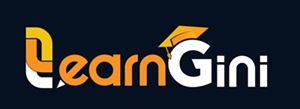In today’s dynamic business environment, monitoring software for employees has become an indispensable tool for companies aiming to enhance productivity, ensure security, and maintain compliance. This software provides businesses with valuable insights into employee activities, helping to optimize workflows and manage remote teams effectively. The educational purpose of this article is to explore the various aspects of Employee Monitoring Software, including its features, benefits, ethical considerations, and the evolving landscape of this technology.
Employee Monitoring Software Overview
Employee Monitoring Software is a suite of tools designed to track and analyze employee activities within an organization. Its primary role is to improve productivity by identifying inefficiencies, secure sensitive data by monitoring access, and ensure compliance with legal and industry standards. In the modern business world, where remote work is increasingly common, these tools are vital for maintaining oversight and accountability.
Key Features
Key features of Employee Monitoring Software include time tracking, screen monitoring, activity logging, and reporting. Time tracking helps managers understand how employees allocate their work hours, which can be crucial for optimizing task distribution and resource management. Screen monitoring allows supervisors to view or record employee screens, ensuring that work-related tasks are being prioritized. Activity logging captures detailed data on the applications used, websites visited, and files accessed, providing a comprehensive view of employee activities. Reporting features generate detailed analyses and summaries that assist in decision-making and performance evaluations. Together, these features provide a robust framework for effective employee management.
Benefits
The benefits of using Employee Monitoring Software are manifold. For employers, it leads to increased productivity by identifying and addressing time wastage and inefficiencies. It also reduces operational costs by optimizing the use of resources and improving workflow management. Additionally, the software is particularly useful in managing remote teams, providing the tools needed to monitor performance and ensure that employees remain focused on their tasks. For employees, the clarity provided by monitoring tools can help set clear expectations and allow for more accurate performance assessments. This transparency can lead to improved job satisfaction and personal development.
Compliance and Privacy
While Employee Monitoring Software offers numerous advantages, it also raises concerns about privacy and compliance. It is crucial for businesses to implement these tools ethically and in compliance with data loss prevention software laws such as the General Data Protection Regulation (GDPR). Companies should inform employees about the monitoring practices, clearly outline the scope of the monitoring, and obtain consent where required. By maintaining transparency and adhering to legal standards, businesses can use Employee Monitoring tools responsibly, balancing the need for oversight with respect for employee privacy.
Use Cases
Employee Monitoring Software is beneficial across various industries and scenarios. For example, in remote work settings, it helps managers track project progress and ensure deadlines are met. In highly regulated industries like finance and healthcare, monitoring tools are essential for securing sensitive information and complying with stringent regulations. Additionally, businesses use these tools for project employment tracking and time optimization, ensuring that resources are allocated efficiently and projects are completed on time.
Choosing the Right Software
Selecting the right Employee Monitoring Software depends on several factors, including the size of the organization, specific needs, and industry requirements. Key considerations include the software’s scalability, ease of integration with existing systems, and user-friendliness. Businesses should also evaluate the software’s reporting capabilities and ensure that it aligns with their compliance obligations. By thoroughly assessing these factors, companies can choose a solution that best meets their unique needs.
Implementation
Successful implementation of Employee Monitoring Software requires careful planning and communication. It’s essential to set clear objectives and communicate the purpose of the software to employees transparently. Providing training and addressing any concerns can help ease the transition and ensure that the software is used effectively. Establishing a feedback loop for continuous improvement is also crucial.
Trends and Future Outlook
The landscape of Employee Monitoring Software is evolving, driven by advancements in artificial intelligence (AI) and machine learning. These technologies enhance the software’s ability to analyze data and provide actionable insights. As remote work continues to grow, the demand for robust monitoring solutions is expected to increase. Future developments may include more sophisticated data analytics, biometric data integration, and greater emphasis on privacy and ethical considerations.

